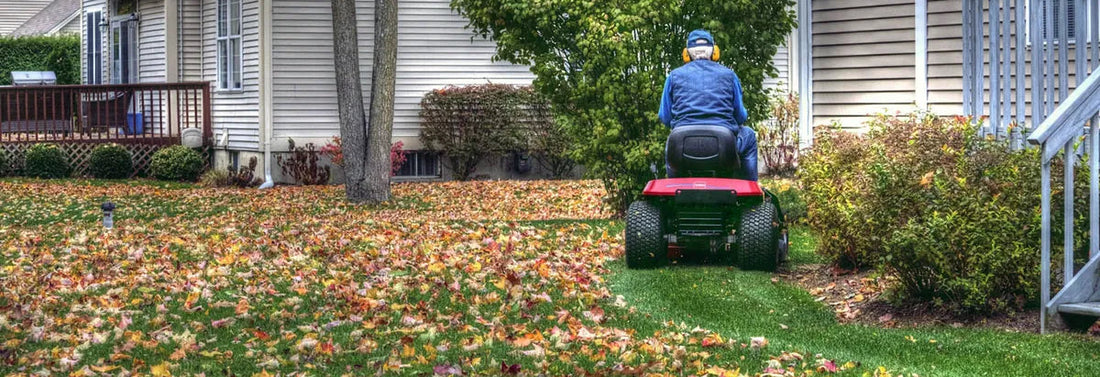When fall arrives, and leaves start to blanket our lawns, many homeowners see it as a chore – raking, bagging, and disposing of the fallen foliage. However, there's a more environmentally friendly and beneficial way to deal with those leaves: mulching. Mulching leaves is not only good for your lawn but also for the environment. In this article, we'll explore the advantages of mulching leaves, the best practices to ensure your lawn stays healthy, and the potential issues to avoid, such as excessive leaf accumulation.
Advantages of Mulching Leaves:
-
Enriching the Soil:
Mulching leaves is an excellent way to give back to your lawn and enrich the soil. As leaves are chopped up by a mulching mower, they decompose faster, providing your soil with a rich source of organic matter. This organic matter breaks down into valuable nutrients, such as nitrogen, phosphorus, and potassium, which are essential for your grass to thrive. This natural fertilization process can extend your current fertilizer program and reduce your environmental impact.
-
Aiding in Soil Structure:
Leaves that are mulched into the lawn help improve soil structure. The organic matter in decomposing leaves enhances soil aeration and water-holding capacity, promoting healthy root growth for your grass. This results in a more resilient lawn that can withstand drought and other environmental stressors.
-
Best Practices for Mulching Leaves:
a. Clear Planting Beds: Before you start mulching, blow leaves out of your planting beds onto the lawn. This ensures that leaves are evenly distributed and not piled up in your flower beds, where they might smother your plants.
b. Use a Mulching Mower: Invest in a mulching mower, which is specially designed to finely chop leaves and distribute them across the lawn as organic matter. A mulching mower has no discharge chute, and it returns the finely mulched leaves back to the soil, where they can nourish your grass.
c. Adjust Mower Height: Set your mower to a proper height to ensure that the leaves are evenly distributed and chopped into small pieces. Mulching works best when the leaf pieces are small and easily decomposable. You may need to pass over areas multiple times until all the leaves are finely dissolved.
d. Regular Maintenance: Mulching leaves is most effective when done regularly throughout the fall season. Instead of waiting for a thick layer of leaves to accumulate, mulch them as they fall. This helps avoid the accumulation of heavy, wet leaves that can smother the lawn.
-
Increasing CEC Levels:
Mulching leaves can also increase the Cation Exchange Capacity (CEC) of your soil. CEC is a measure of your soil's ability to retain and exchange essential nutrients with plant roots. When leaves decompose and release nutrients into the soil, they enhance the CEC, which means your lawn can better utilize the available nutrients, resulting in healthier and greener grass.
Caution: Avoid Excessive Leaf Accumulation
While mulching leaves is a beneficial practice, it's essential to strike the right balance. Excessive leaf accumulation on your lawn can lead to potential problems. Thick layers of leaves can smother the grass and block sunlight, which is essential for photosynthesis. This can result in damage to the lawn, leading to weak, patchy, or even dead areas.
To avoid this issue, make sure to mulch leaves regularly as they fall and monitor the depth of leaves on your lawn. If the leaf layer becomes too thick, consider using some leaves as mulch in your planting beds or composting the excess. Maintaining a reasonable amount of mulched leaves on your lawn will provide all the benefits without causing harm.
By following these best practices, being mindful of leaf accumulation, and avoiding excessive leaves, you can make the most of mulching leaves and ensure that your lawn thrives and remains healthy throughout the fall and beyond.

